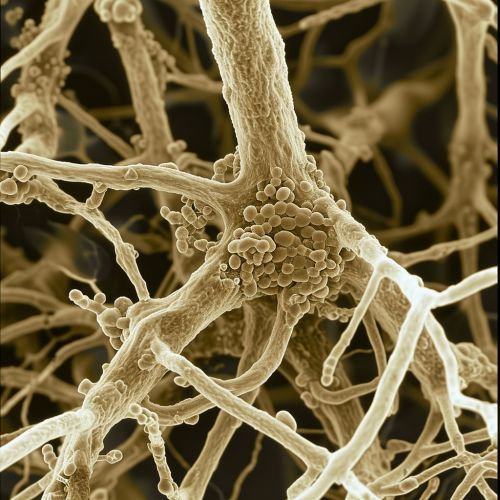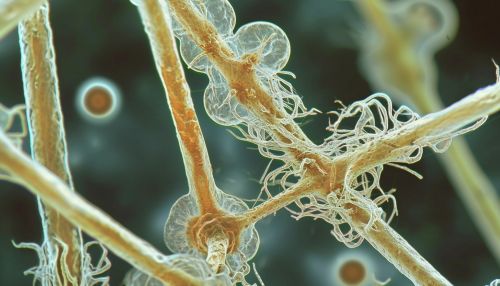Phytomyxea
Introduction
Phytomyxea, also known as Plasmodiophorids, is a group of eukaryotic organisms that belong to the kingdom Protista and are classified under the phylum Plasmodiophorida. They are obligate biotrophic parasites that primarily infect the roots of higher plants, causing significant economic losses in agriculture and horticulture.


Biology and Life Cycle
Phytomyxea organisms are unique in their life cycle, which involves alternating between two distinct phases: the plasmodial phase and the sporangial phase. The plasmodial phase is characterized by the formation of a multinucleate plasmodium within the host cell, which is formed by repeated nuclear divisions without cytokinesis. The sporangial phase involves the formation of resting spores within the plasmodium, which are then released into the soil to infect new hosts.
Taxonomy
The taxonomy of Phytomyxea has been a subject of debate among scientists due to their unique biological characteristics and complex life cycle. They were initially classified as fungi due to their parasitic nature and the formation of spores. However, molecular studies have revealed that they are more closely related to the group Rhizaria, which includes other amoeboid and flagellated protists.
Pathogenicity and Host Interactions
Phytomyxea are known to cause several plant diseases, including clubroot in crucifers, powdery scab in potatoes, and wart disease in other vegetables. They infect the roots of the host plant and cause the formation of galls or tumors, leading to reduced plant growth and yield.
Economic Impact
The economic impact of Phytomyxea is significant, particularly in the agriculture and horticulture sectors. They cause severe yield losses in several important crops, including canola, cabbage, and potatoes. In addition, the management of these diseases is challenging due to the persistence of the spores in the soil and the lack of effective control methods.
Control and Management
Control of Phytomyxea diseases primarily involves cultural practices, such as crop rotation and the use of resistant varieties. Chemical control is often ineffective due to the intracellular nature of the parasites and their ability to form resistant spores. Biological control using antagonistic organisms is a promising area of research.
Research and Future Directions
Research on Phytomyxea is focused on understanding their biology, life cycle, and host interactions to develop effective control strategies. Future directions include the use of genomics and transcriptomics to understand the molecular mechanisms of pathogenicity and host resistance.
